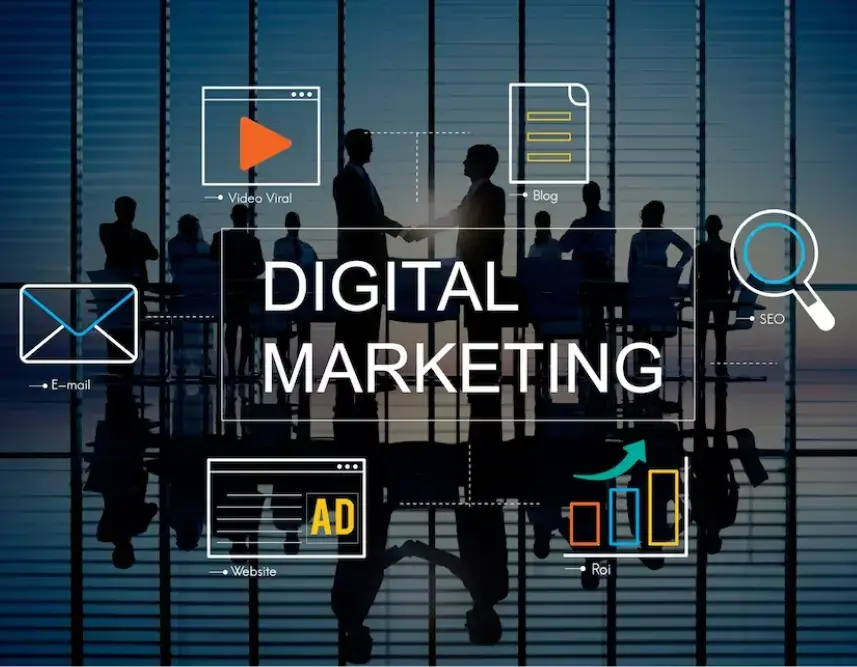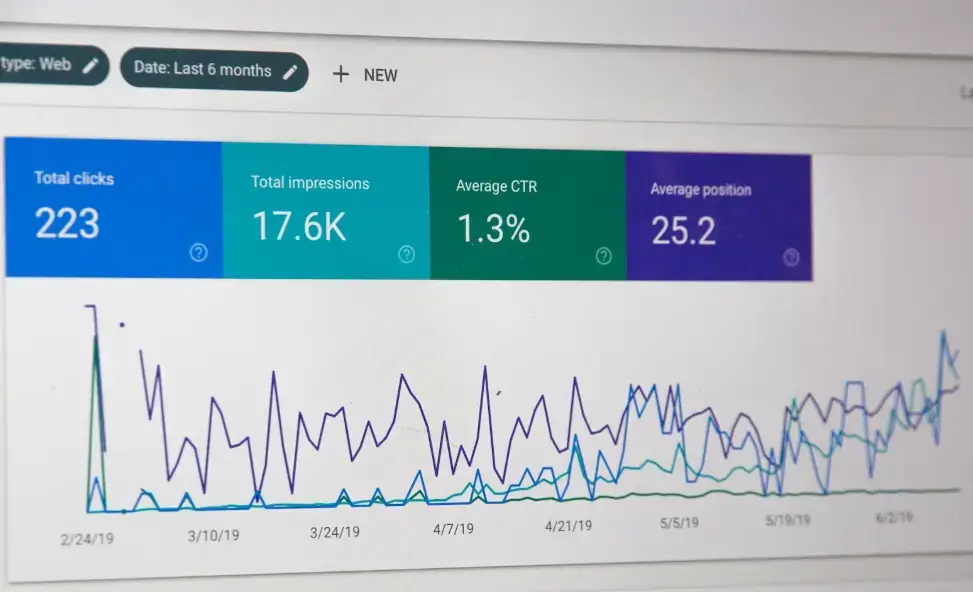User experience (UX) creates products and services that deliver meaningful, relevant experiences to users. In digital marketing, it can significantly impact the brand's success.
This article will discuss user experience in digital marketing, its importance, and some tips to improve it for online marketing success.
In this article:
- Understanding the Basics of User Experience (UX)
- User Experience and Digital Marketing
- Example of UX in Digital Marketing
- The Importance of UX in the Digital Marketing Landscape
- How to Improve UX Design in Digital Marketing

Understanding the Basics of User Experience (UX)
What is UX?
User experience (UX) is the complete journey a person takes when using a product, including their direct interactions, how it fits into their overall task-completion process, and the steps before and after using the product.
It is not just about the user interface (UI), the product's visual and interactive part. It also includes other elements such as content relevance, ease of use, and how the product fits into the user's workflow.
When owning a website, you have to focus on user experience, as 88% of online consumers are less likely to revisit a website after a bad experience. A good user experience focuses on meeting the customer's exact needs without fuss or bother.
It goes beyond providing what users want and aims to deliver meaningful, relevant experiences. User experience can be applied to websites, mobile apps, wearable technology and other products and services.
What Are the Key Elements of UX?
User experience encompasses various elements, such as:
Usability
Usability is about ensuring a digital product or content is easy to navigate and functional. It focuses on creating an efficient and user-friendly interface that users can interact with seamlessly.
Accessibility
Accessibility ensures that digital products are usable by people of all abilities by ensuring content is compatible with screen readers, providing keyboard navigation options, and using appropriate color contrast for visually impaired users.
Design
Design involves creating visually appealing and user-friendly interfaces. It includes aspects such as layout, color scheme, typography, and graphics to make the product aesthetically pleasing and easy to use.

We will discuss this more in the succeeding section: How to Improve UX Design in Digital Marketing.
Functionality
Functionality is the features and capabilities of a digital product that enable users to accomplish their goals. It includes interactive elements, form validation, error handling, and smooth performance.
Content Quality
Along with the above elements, providing high-quality content is crucial for a positive user experience.
Valuable, relevant and engaging content helps keep users interested in the product or service. It includes clear and concise writing, visual storytelling, and appropriate use of multimedia elements.
Now that we've established what user experience is, let's explore how it relates to digital marketing.
User Experience and Digital Marketing

Digital marketing is about promoting brands and products using the internet and other digital platforms.
It involves leveraging digital technologies such as desktop computers, mobile phones, and social media platforms to connect with potential customers and deliver personalized experiences.
As with any digital marketer, the primary goal is to provide a positive user experience.
It impacts how users perceive your brand and what you offer. By providing a seamless, enjoyable experience, customers are more likely to be retained and encouraged to revisit the website.
Additionally, consider bringing a skilled UX designer on board to ensure that your digital marketing initiatives are backed by expert insights and user-centric design principles, ultimately leading to enhanced user experiences.
To enhance your user experience efforts, consider tapping into the expertise of UX research agencies.
These specialists conduct thorough analysis and research on user behavior, preferences, and interactions with digital platforms.
Therefore, it's wise to explore and engage with a reputable list of user experience research companies to elevate your digital marketing endeavors to the next level.
UX greatly impacts conversion. Poor UX can significantly drop conversion rates, while a better one can increase conversion by up to 200%.
Users will likely convert into customers when they find websites easy to navigate, locate the information they need, and complete actions.
Example of UX in Digital Marketing
Digital marketing encompasses a vast range of tactics and channels that businesses use to reach their target audience. It includes content marketing, SEO, pay-per-click (PPC), social media marketing, email marketing and affiliate marketing – all of which UX can be applied.

E-commerce Website - Amazon
Amazon, one of the world's largest e-commerce platforms, strongly emphasizes user experience to drive sales and customer loyalty. Here are a few key UX elements on Amazon:
- Personalized Recommendations: Amazon uses machine learning algorithms to provide customized product recommendations based on users' purchase history. It enhances the user experience by making it easier for customers to discover products they might be interested in.
- Efficient Search and Filters: Amazon's search is highly effective, enabling users to find products by keyword, filter, and sort quickly. It reduces the time and effort required to locate items.
- User Reviews and Ratings: Detailed user reviews and product ratings provide valuable information to potential buyers, helping them make informed decisions. This transparency in user feedback contributes to a positive shopping experience.
- One-Click Ordering: Amazon pioneered the "One-Click Ordering" feature, streamlining checkout and making it easy for returning customers to complete purchases.

The Importance of UX in the Digital Marketing Landscape
"Without a user experience, there is no digital marketing." - This statement speaks volumes about the significance of User Experience (UX) in digital marketing.
In today's highly competitive online landscape, creating a positive user experience has become essential for businesses to succeed and thrive. Here's how UX impacts digital marketing and its role in achieving marketing objectives:
1. UX determines first impressions
When users interact with your brand's app or visit your website, their initial experience will shape their perception of your business.
A positive UX can leave a lasting impression on users, encouraging them to explore further and engage with your digital marketing content or campaign.

2. UX enhances user engagement
A positive UX design makes it easier for users to interact with your digital marketing content. It creates a seamless, intuitive experience that keeps users engaged and encourages them to explore more of what your brand offers.
3. UX improves brand perception
A positive user experience helps build a strong brand reputation.
When users have a good experience with your digital marketing content, they are more likely to remember your brand favorably and even recommend it to others.
4. UX boosts customer retention
When users have a good experience with your brand, they are more likely to stay connected and engage with your products or services again.
5. UX increases conversion rates
As mentioned above, a better UX can increase conversion up to 200% compared to a website with poor UX.
The better the user experience, the more likely they are to become customers. UX principles like visible CTAs, clear navigation menus and good website speed lead to an increase in conversion rate.
6. UX decreases bounce rates
Bounce rate is the percentage of users who leave a website after viewing a single page.
A positive UX can reduce bounce rates by providing a seamless and enjoyable experience that keeps users coming back and engaged on your digital platforms.
7. UX improves search engine rankings
When a potential customer finds a website that meets their needs, they are more likely to browse the site or take a desired action.
High click-through rates with a low bounce rate will likely rank higher as Google's algorithm promotes websites that meet the search intent of web browsers and fulfill their needs.
8. UX contributes to online lead and sales
As positive UX converts more leads, it can ultimately lead to higher sales. Users who have a good experience with your digital marketing content are more likely to become loyal customers and make repeat purchases.

How to Improve UX Design in Digital Marketing
UX design is creating products that provide relevant and meaningful experiences to users. It involves acquiring and integrating the product, including aspects of branding, design, usability, and function.
UX design enhances the user experience and drives conversions by creating a good first impression and meeting and exceeding users' expectations.
To do this, here are several practical strategies to level up a website, or tasks a marketer can work on to improve the landing page/website's UX for digital marketing success.

Making it easy to navigate
Easy navigation is a crucial element of a successful UX design. It includes clear, concise menu options, a search function, and well-organized content to provide users with an intuitive navigation system.
They can easily find the information or products they are looking for, leading to a positive user experience.
Optimizing for mobile
By 2023, there will be a forecasted 7.33 billion mobile users, so optimizing your digital marketing for these users is essential. More than 29% of global users purchase through their mobile devices.
Use a design that adjusts the content and layout according to the screen size. Also, make sure your campaign is mobile-friendly and that your social media content looks good on mobile screens.
Improving page speed

The website's average page speed is 3.21 seconds. However, 47% of customers expect them to load in 2 seconds or less, or they will leave the site. Some tips for improving page speed include:
- Reducing file size by compressing images and videos.
- Minifying code and enabling browser caching to improve load times.
- Simplifying website design to reduce the number of HTTP requests.
Enhancing website responsiveness
A responsive web design displays and functions seamlessly from desktop computers to smartphones. It ensures users have a consistent experience across devices, making it easier to access and find what they're looking for.
Some features of a responsive site that improve UX include pages and content that adjust to different screen sizes, images, videos, and other media that are optimized for various devices, menu options and buttons that are easy to tap or click on smaller screens.
Test your UX design
The key to making the most out of user experience in digital marketing is testing.
You can conduct usability testing sessions, UI testing, run A/B tests, and gather user feedback to identify areas for improvement and make necessary changes to your UX over time.
Additionally, session replay allows you to visually review user interactions, providing valuable insights into user behavior and aiding your UX design over time.
Conclusion: Prioritizing UX Is a Necessity for Online Marketing Success
As we continuously navigate the ever-changing digital marketing landscape, it is essential to prioritize user experience and constantly improve it.
Doing so improves conversion and bounce rates, and search engine rankings, helping businesses stay competitive and ensure long-term success in the online world.
Let's take action and prioritize UX design in our digital marketing efforts to achieve a more successful, customer-centric approach.

Author Bio
Kevin is the CEO and founder of Aemorph. A seasoned entrepreneur and digital marketing expert. Kevin started in digital marketing in 2010, specializing in Search Engine Optimisation, and is helping Finance, Insurance, E-commerce, Medical, B2B, and SaaS companies.
Kevin is also a certified adult educator in Singapore, delivering high-quality, relevant, and easy-to-implement training to help learners achieve immediate results and build on their knowledge. He's currently building Mint Superteams with a mission to train 1 million people and place them into companies.




